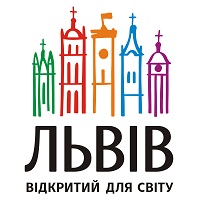
Lviv guests often ask us: ‘Where are the lions that are a must-see when visiting Lviv?’ We have compiled a list of the best lions in Lviv, although not all of them, as they add up to 4,000. They are all different, reflecting various events, people, their lives, and some of the lions are simply nice creatures that adorn and guard our city.
The White Lion is one of Ukraine’s most unique heritage sites and has a long-standing history of its own. Located in the city of Lviv, it is a place steeped in culture and tradition, offering visitors a unique glimpse into Ukrainian life. Whether you’re looking for a day-trip destination or a place to explore for a weekend getaway, Lviv and the White Lion are an excellent choice.
Since its establishment in the 14th century, Lviv has become an important city for trade and commerce. The city was historically a cultural center for musicians, writers, and artists, and it remains so today. It is a place full of history, art, and charm, and this is reflected in the architecture, culture, and activities you can find here. From its iconic landmarks, like the White Lion, to its cafes and galleries, there is always something to do and see.
The White Lion is a historical symbol of the city and is located in the center of Lviv, which is why it is also known as the “heart of the city”. It was originally built in the 15th century and was used as a symbol of the power of the city and its rulers. The statue of the White Lion represents courage and strength, and is said to have been erected by the King of Poland, Stanislaw I, in honor of his daughter.
The White Lion statue has changed over the years, and even undergone renovations. In the 19th century, for example, the statue was moved and underwent a few minor changes. During WWII, the statue was destroyed in an air raid, but it was then reconstructed in 1949 by sculptor Stanislaw Ostrowski. The White Lion was once again restored and renovated in 1983 and then it was unveiled to celebrate the 750th anniversary of the city’s founding.
The White Lion is a very important symbol for the city of Lviv and is closely associated with the city’s history. The statue represents strength and courage and stands as a reminder of the city’s resilience. The White Lion is also a symbol of the power and loyalty of the city’s rulers and is a reminder of the city’s turbulent past.
Besides being a symbol of Lviv itself, the White Lion is also a symbol of Ukrainian heritage and culture. It is seen as a symbol of national pride and unity by many, and it is a reminder of the importance of preserving and promoting Ukraine’s culture, history, and traditions.
The White Lion statue is a great place to begin exploring Lviv, but it’s definitely not the only place worth checking out. There are plenty of other attractions nearby, such as:
If you’re looking for some nightlife, there are also plenty of bars and clubs in Lviv, offering something for everyone. From traditional pubs and restaurants to modern clubs, you’ll find something to suit your taste.
The White Lion is an iconic symbol of Lviv and Ukraine, as well as an important part of the city’s history and culture. It is a reminder of the power of the city’s rulers and an important part of its identity. There is so much to explore in Lviv, and the White Lion is just the start. Whether you’re looking for a day-trip destination or a weekend getaway, Lviv is the perfect place to visit. With its unique architecture, culture, and attractions, it’s definitely worth a visit.
We start our walk from the heart of Lviv – 1 Rynok Square – the City Hall.
The first lions appeared on the City Hall after its extensive renovation (1617-1619) according to the order of, and funded by, Burgomaster M. Kampian. The new eight-sided tower with four clock dials was encircled by a balcony, which was based on 20 consoles, eight of them looking like lions holding shields with the family coats of arms of the richest city families in their paws (two of them are located near High Castle, two others on Kopernyka Street near St. Lazarus Monastery, and another one is in the Lviv Art Gallery).
The new lions that can be seen now in front of the City Hall were created in 1948 by Lviv sculptor Yevhen Dzyndra.
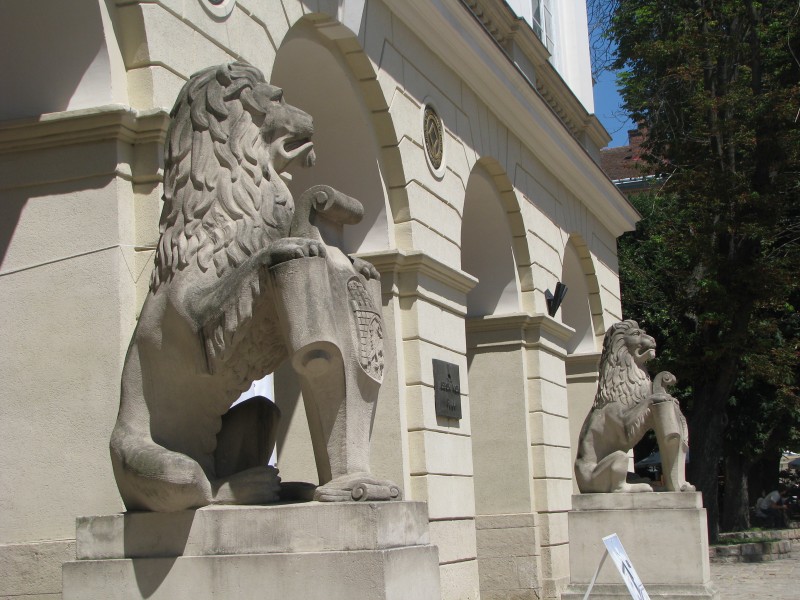
We start our walk from the heart of Lviv – 1 Rynok Square – the City Hall.
The first lions appeared on the City Hall after its extensive renovation (1617-1619) according to the order of, and funded by, Burgomaster M. Kampian. The new eight-sided tower with four clock dials was encircled by a balcony, which was based on 20 consoles, eight of them looking like lions holding shields with the family coats of arms of the richest city families in their paws (two of them are located near High Castle, two others on Kopernyka Street near St. Lazarus Monastery, and another one is in the Lviv Art Gallery).
The new lions that can be seen now in front of the City Hall were created in 1948 by Lviv sculptor Yevhen Dzyndra.
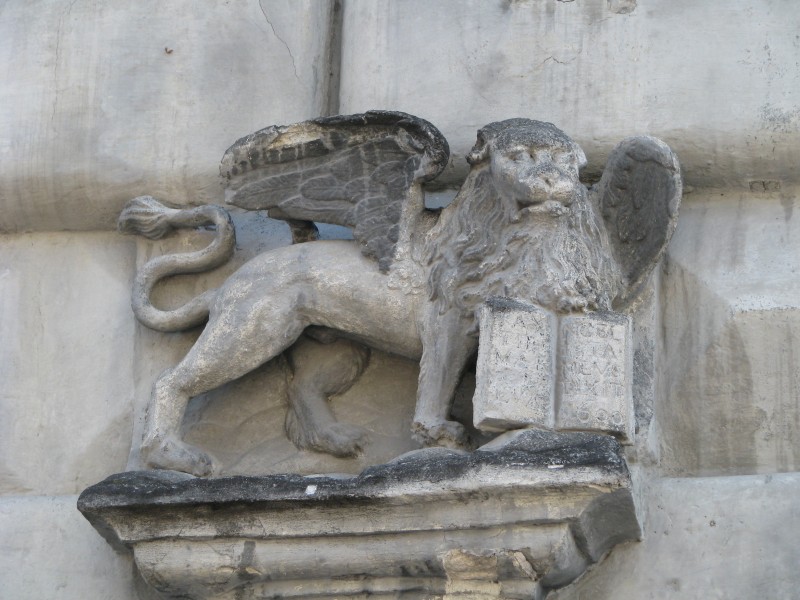
The building at 14 Rynok Square is Massari or Venetian Stonehouse. The name is derived from dalmatian – Antonio Massari, who owned the house in the late 16 th century, came to the city, became a citizen of Lviv, and married a rich local girl. He was engaged in trade, but also served as an ambassador of Venice. That is why above the entrance you can see the symbol of Venice – the winged lion of St. Mark. In 1589 the house was reconstructed. The date “1600” tover the entrance indicates the year of the house’s restoration.
The building at 14 Rynok Square is Massari or Venetian Stonehouse. The name is derived from dalmatian – Antonio Massari, who owned the house in the late 16 th century, came to the city, became a citizen of Lviv, and married a rich local girl. He was engaged in trade, but also served as an ambassador of Venice. That is why above the entrance you can see the symbol of Venice – the winged lion of St. Mark. In 1589 the house was reconstructed. The date “1600” tover the entrance indicates the year of the house’s restoration.
The house at 4 Ruska Street, built in the 16 th century, became the property of an Armenian family, Wartanowicz in 1610, who left an ancient Armenian inscription above the windows of the house.
Here (in the yard) one can see the oldest emblem of Lviv cafes – the head of a lion holding a grape cluster in his mouth. The lion resembles images of chimeras at Notre Dame de Paris Cathedral, since they all are in the Gothic style. Here is a cafe located at the back of the yard. Its old Austrian interior is enhanced by Emperor Franz Joseph L`s portrait and ancient Lviv panoramas.
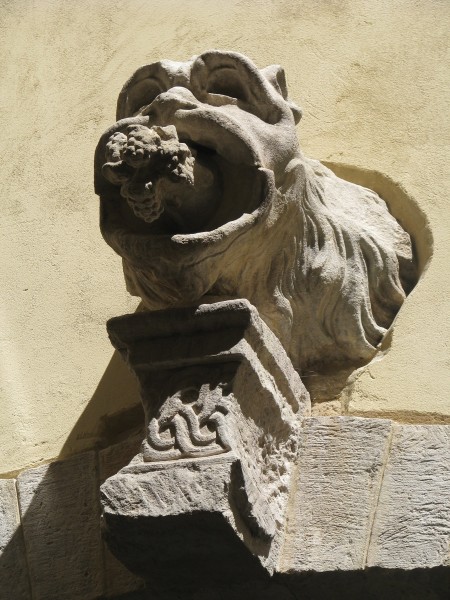
The house at 4 Ruska Street, built in the 16 th century, became the property of an Armenian family, Wartanowicz in 1610, who left an ancient Armenian inscription above the windows of the house.
Here (in the yard) one can see the oldest emblem of Lviv cafes – the head of a lion holding a grape cluster in his mouth. The lion resembles images of chimeras at Notre Dame de Paris Cathedral, since they all are in the Gothic style. Here is a cafe located at the back of the yard. Its old Austrian interior is enhanced by Emperor Franz Joseph L`s portrait and ancient Lviv panoramas.

Between the buildings at 8 and 10 Ruska Street there used to be a passage to Ruska Street from the Old Jewish Quarter (nowadays – Fedorova Street), which was surrounded by walls, and the gate leading there (Jewish Gate) was locked at night from both sides to prevent possible conflicts. The lions (on the facade) are holding a caduceus. The caduceus is a herald's staff or wand carried by Hermes in Greek mythology and by Mercury, messenger of the Gods, in Roman mythology and had the ability to reconcile. It took the form of a rod entwined by two snakes, or a winged rod, made of olive or laurel trees, and was considered to be a symbol of inviolability. In modern times the caduceus is the symbol of trade.
Between the buildings at 8 and 10 Ruska Street there used to be a passage to Ruska Street from the Old Jewish Quarter (nowadays – Fedorova Street), which was surrounded by walls, and the gate leading there (Jewish Gate) was locked at night from both sides to prevent possible conflicts. The lions (on the facade) are holding a caduceus. The caduceus is a herald's staff or wand carried by Hermes in Greek mythology and by Mercury, messenger of the Gods, in Roman mythology and had the ability to reconcile. It took the form of a rod entwined by two snakes, or a winged rod, made of olive or laurel trees, and was considered to be a symbol of inviolability. In modern times the caduceus is the symbol of trade.
The building at Ruska Street 20 was built for the Ukrainian credit union ‘Dnister’ on the site of the former palace of the Ruthenian Metropolitans. There are several memorial tablets on the walls: one in memory of the first performance in 1909 by famous Ukrainian director and actor Les’ Kurbas, another in honor of the founder of the Ukrainian Military Sports Association and of the ‘Dnister’ Credit Union – Vasyl Nahirnyi, and one plaque in honor of the Sports Association. The Galician coat of arms, ‘Walking Lion’ and the image of the Galician lands patron, Archangel Michael, are on the facade.

The building at Ruska Street 20 was built for the Ukrainian credit union ‘Dnister’ on the site of the former palace of the Ruthenian Metropolitans. There are several memorial tablets on the walls: one in memory of the first performance in 1909 by famous Ukrainian director and actor Les’ Kurbas, another in honor of the founder of the Ukrainian Military Sports Association and of the ‘Dnister’ Credit Union – Vasyl Nahirnyi, and one plaque in honor of the Sports Association. The Galician coat of arms, ‘Walking Lion’ and the image of the Galician lands patron, Archangel Michael, are on the facade.
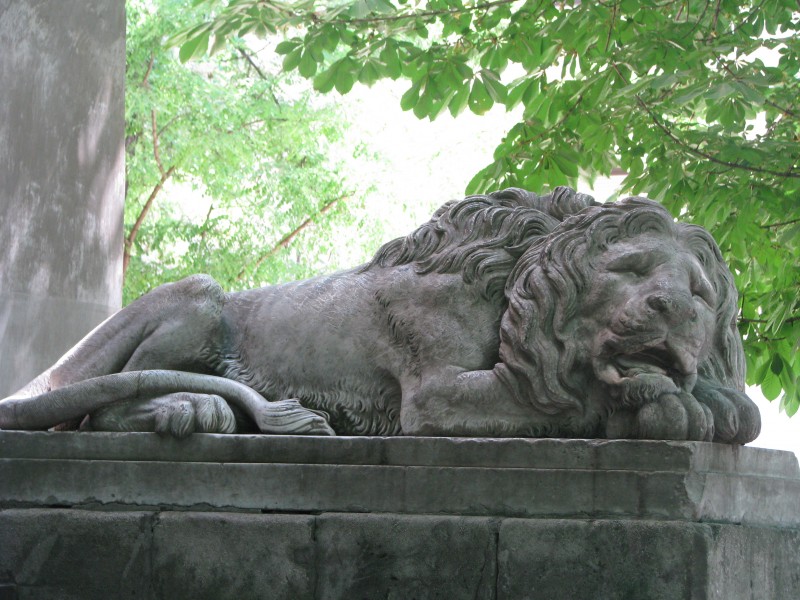
Lviv’s sleeping lions are present in almost all Lviv tourist guides. You have a chance to see them for yourself near the Gunpowder Tower (1554-1556) at 4 Pidvalna Street.
Of the dozens of powerful Lviv defensive towers, gates, and bastions only one survived: the Gunpowder Tower, built of stone from the old City Arsenal. It was the most solid and the strongest tower, because the eastern invaders usually approached from this side; thus, the thickness of its walls is approximately 3 m. The tower is located on the defensive ground ramparts remaining from ancient times, and in the 19 th century a park was built in this area, called ‘Hubernatorski Valy’ (Governor’s Ramparts), for the Austrian Governor of Galician’s residence that was located nearby.
The Gunpowder Tower was the part of the defensive system of medieval Lviv, consisting of walls and towers. In peacetime it was used for grain storage. In 1954 the tower was reconstructed. Since 1959 the Lviv Office of the Board of the Architects Union of Ukraine has been located here. Also, since then the entrance to the tower has been guarded by two lions made of white marble from the 19 th century, which are of great artistic value.
Lviv’s sleeping lions are present in almost all Lviv tourist guides. You have a chance to see them for yourself near the Gunpowder Tower (1554-1556) at 4 Pidvalna Street.
Of the dozens of powerful Lviv defensive towers, gates, and bastions only one survived: the Gunpowder Tower, built of stone from the old City Arsenal. It was the most solid and the strongest tower, because the eastern invaders usually approached from this side; thus, the thickness of its walls is approximately 3 m. The tower is located on the defensive ground ramparts remaining from ancient times, and in the 19 th century a park was built in this area, called ‘Hubernatorski Valy’ (Governor’s Ramparts), for the Austrian Governor of Galician’s residence that was located nearby.
The Gunpowder Tower was the part of the defensive system of medieval Lviv, consisting of walls and towers. In peacetime it was used for grain storage. In 1954 the tower was reconstructed. Since 1959 the Lviv Office of the Board of the Architects Union of Ukraine has been located here. Also, since then the entrance to the tower has been guarded by two lions made of white marble from the 19 th century, which are of great artistic value.
The first owner of the building at 4 Rynok Square, built in 1577 by architect P. Krasovskyi, was Andriy from Kyiv, so the building was called Kyiv House. At the end of the 16 th century a member of a Lviv patrician family, Jan Lorenzowicz, opened one of the first pharmacies in Lviv here. Then the building was called Lorenzowicz House. His granddaughter married a doctor named Martin Anczewski, and so in the 17 th century the building was called Doctor’s House. At the same time, Doctor Anczewski had the house decorated with a sculpture of his patron saint, St. Martin, who cut his cloak in half with his sword to share it with a beggar. Here one can also see the figure of the Lviv Saint Stanisław Kostka, the city’s patron and protector from the fire.
Above the door one can see a family symbol – the lion on castle walls holding a sword in his raised paw. Around the lion you can find obsolete letters, which are interpreted as ‘Martin Anczewski, Secretary of the King, Doctor of Medicine, Lviv Counselor’ At the entrance a stone bench from the Middle Ages has been preserved where a guard used to sit.

The first owner of the building at 4 Rynok Square, built in 1577 by architect P. Krasovskyi, was Andriy from Kyiv, so the building was called Kyiv House. At the end of the 16 th century a member of a Lviv patrician family, Jan Lorenzowicz, opened one of the first pharmacies in Lviv here. Then the building was called Lorenzowicz House. His granddaughter married a doctor named Martin Anczewski, and so in the 17 th century the building was called Doctor’s House. At the same time, Doctor Anczewski had the house decorated with a sculpture of his patron saint, St. Martin, who cut his cloak in half with his sword to share it with a beggar. Here one can also see the figure of the Lviv Saint Stanisław Kostka, the city’s patron and protector from the fire.
Above the door one can see a family symbol – the lion on castle walls holding a sword in his raised paw. Around the lion you can find obsolete letters, which are interpreted as ‘Martin Anczewski, Secretary of the King, Doctor of Medicine, Lviv Counselor’ At the entrance a stone bench from the Middle Ages has been preserved where a guard used to sit.
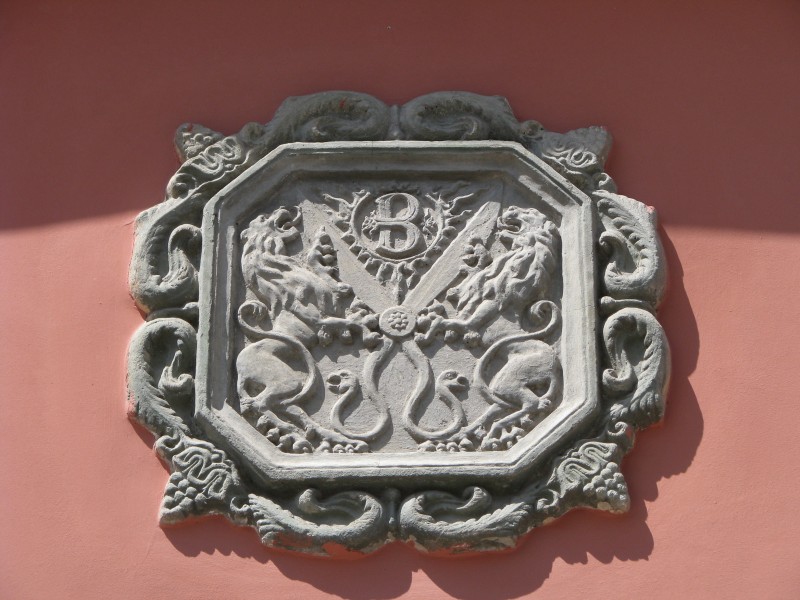
38 Rynok Square, House of the Wilczek Family, was built in the 17th century. Above the door you can see the tailors shop emblem – scissors held by the lions.
38 Rynok Square, House of the Wilczek Family, was built in the 17th century. Above the door you can see the tailors shop emblem – scissors held by the lions.
One extraordinary lion is hidden at the gate of the Armenian Cathedral complex (previously it was at the Krakow Gate) at the feet of the Virgin Mary statue. You can only see it standing on the other side of the street.
Krakow Gate was mentioned in the documents for the first time in 1386 and was called Tatar Gate, the same as the street attached to it. In 1404 a faceted furriers’ tower was built above the gate which led to the wooden bridge mentioned in 1407. Later on a smallerмtower was built next to it. These towers were the treasuries, where the municipal and royal taxes were collected in Lviv. During the fire in 1527, the Krakow Gate complex was one of the few fortifications that remained almoust undamaged. The fire from the Krakow Gate towers repelled Tatar attacks in 1695. Armenians found the statue of the Virgin Mary from the destroyed Krakow Gate and placed it over their gate near the Cathedral.
The Armenian Church was built in the second half of the 14 th century (1363-1370) by Silesian architect Doring, and for centuries it was a public and religious center of the Lviv Armenian community. Later on, the bell tower (1571, P. Krasowski), the Archbishop’s Palace (18th century), the Armenian Bank (17th century), the Benedictine Monastery (1682), a memorial column with the figure of St. Christopher and a wooden altar with a ‘Golgotha’ scene (18th century), and a fence with gates (17th-19th century) were built around the сhurch.
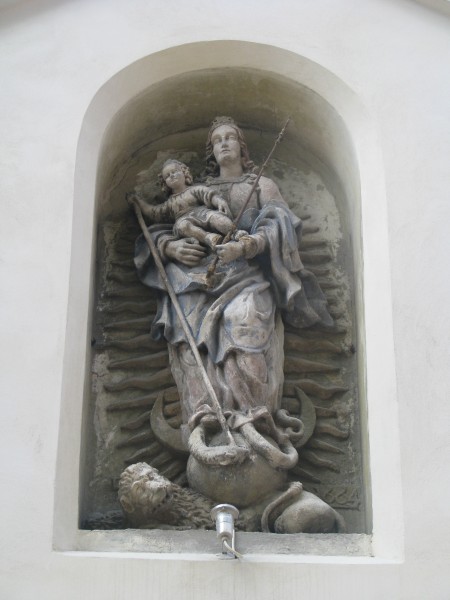
One extraordinary lion is hidden at the gate of the Armenian Cathedral complex (previously it was at the Krakow Gate) at the feet of the Virgin Mary statue. You can only see it standing on the other side of the street.
Krakow Gate was mentioned in the documents for the first time in 1386 and was called Tatar Gate, the same as the street attached to it. In 1404 a faceted furriers’ tower was built above the gate which led to the wooden bridge mentioned in 1407. Later on a smallerмtower was built next to it. These towers were the treasuries, where the municipal and royal taxes were collected in Lviv. During the fire in 1527, the Krakow Gate complex was one of the few fortifications that remained almoust undamaged. The fire from the Krakow Gate towers repelled Tatar attacks in 1695. Armenians found the statue of the Virgin Mary from the destroyed Krakow Gate and placed it over their gate near the Cathedral.
The Armenian Church was built in the second half of the 14 th century (1363-1370) by Silesian architect Doring, and for centuries it was a public and religious center of the Lviv Armenian community. Later on, the bell tower (1571, P. Krasowski), the Archbishop’s Palace (18th century), the Armenian Bank (17th century), the Benedictine Monastery (1682), a memorial column with the figure of St. Christopher and a wooden altar with a ‘Golgotha’ scene (18th century), and a fence with gates (17th-19th century) were built around the сhurch.
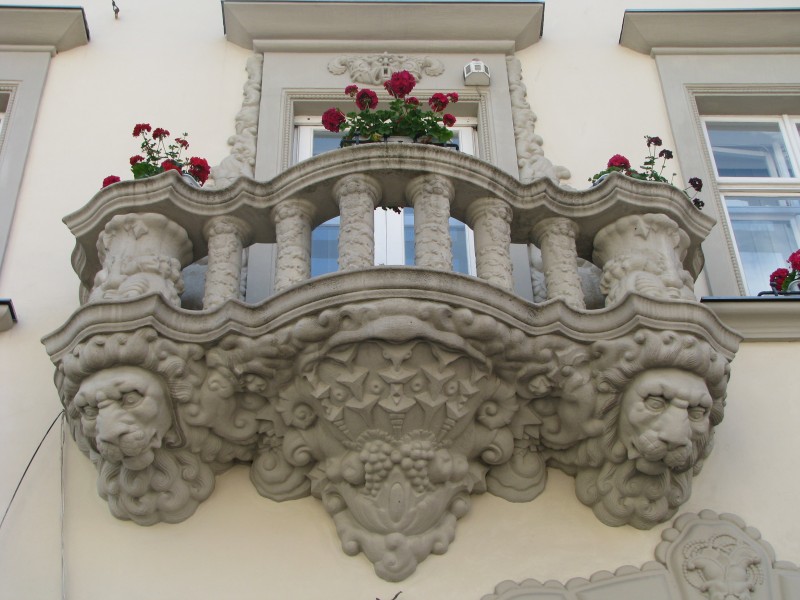
The 31 Rynok Square building, according to the majority of information sources, dates back to the 18 th century. On the first floor beam we can see the date ‘ANNO DOMINI 1714’. This house is also known as the Mazancz Palace and the building is an interestingattraction due to its decorations resembling lace technique. The balcony is supported by ‘lace lions’ (mascarons).
The main reconstruction of the building was completed in 1923. You can find this date on the cartouche, on the facade. The origin of the house name is unknown. In the 19 th century the house belonged to the Baczewski family who owned a horilka (vodka) company in Lviv at that time.
The 31 Rynok Square building, according to the majority of information sources, dates back to the 18 th century. On the first floor beam we can see the date ‘ANNO DOMINI 1714’. This house is also known as the Mazancz Palace and the building is an interestingattraction due to its decorations resembling lace technique. The balcony is supported by ‘lace lions’ (mascarons).
The main reconstruction of the building was completed in 1923. You can find this date on the cartouche, on the facade. The origin of the house name is unknown. In the 19 th century the house belonged to the Baczewski family who owned a horilka (vodka) company in Lviv at that time.
The house at 28 Rynok Square was built by Lviv advisor and doctor of medicine, Pawel Dominic Heppner in the 17 th century. This is one of the most beautiful examples of Renaissance architecture in Lviv and it has remained almost unchanged up till the present time. The house has had several names: Doctor’s, Dominican, and Heppner’s. Thanks to the Latin inscriptions it is also called ‘a house of aphorisms’. Here are some of them: ‘Who is rich? One who does not have desires. And who is poor? The greedy’, ‘Something useful never dissonants with the beautiful’, ‘Where there is mercy, there is God’, ‘A good man is not jealous of anyone’, ‘Virtue overcomes all’, etc… The second-floor windows are supported by lion mascarons with rings in their mouthes.
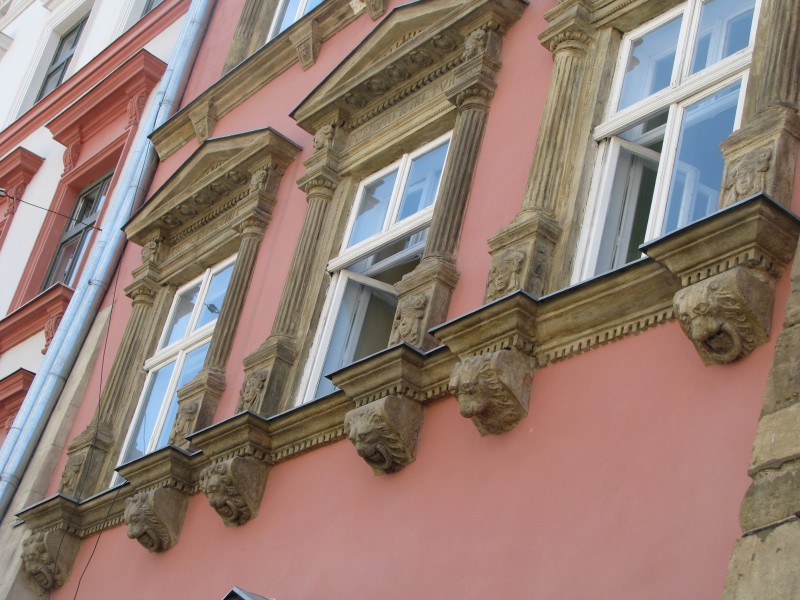
The house at 28 Rynok Square was built by Lviv advisor and doctor of medicine, Pawel Dominic Heppner in the 17 th century. This is one of the most beautiful examples of Renaissance architecture in Lviv and it has remained almost unchanged up till the present time. The house has had several names: Doctor’s, Dominican, and Heppner’s. Thanks to the Latin inscriptions it is also called ‘a house of aphorisms’. Here are some of them: ‘Who is rich? One who does not have desires. And who is poor? The greedy’, ‘Something useful never dissonants with the beautiful’, ‘Where there is mercy, there is God’, ‘A good man is not jealous of anyone’, ‘Virtue overcomes all’, etc… The second-floor windows are supported by lion mascarons with rings in their mouthes.
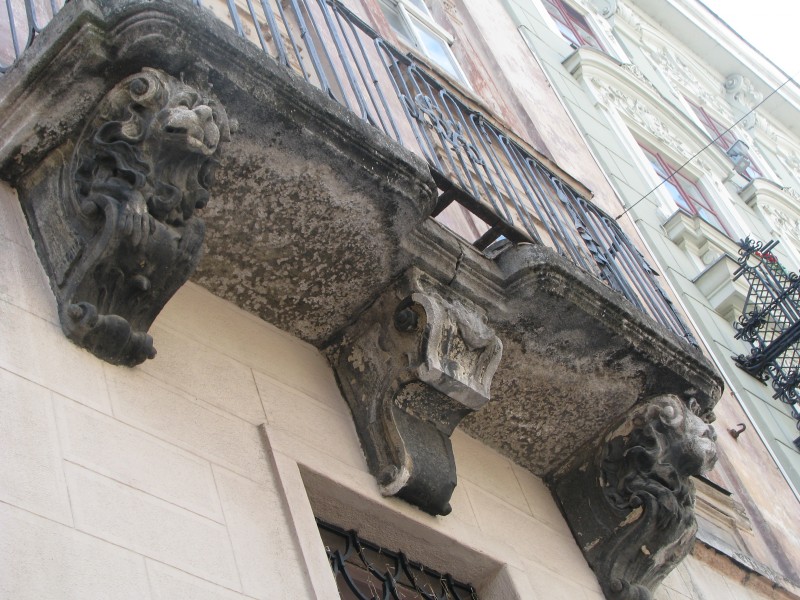
At 25 Rynok Square Gothic elements were found in the house during the restoration work in the first half of the 20 th century. The balcony of this house is supported by ‘cheerful’ (mascarons), one of which is somewhat damaged.
In the 18 th century a printing house was based here. Then according to the will of its owner, Mr. Filipowicz, the building was given to St. John the Divine and St. Onuphrius monasteries.
At 25 Rynok Square Gothic elements were found in the house during the restoration work in the first half of the 20 th century. The balcony of this house is supported by ‘cheerful’ (mascarons), one of which is somewhat damaged.
In the 18 th century a printing house was based here. Then according to the will of its owner, Mr. Filipowicz, the building was given to St. John the Divine and St. Onuphrius monasteries.
On the facade of the building at 2 Katedralna Square you can see the ‘Smiling Lion’ – it is the most popular lion among visitors. He raises his small eyebrows as if he was asking, ‘Well, what do you know about me?’ In fact, we know almost nothing, because the history of the house is not fully known, but we can guess that the owners of the house were truly positive personalities.
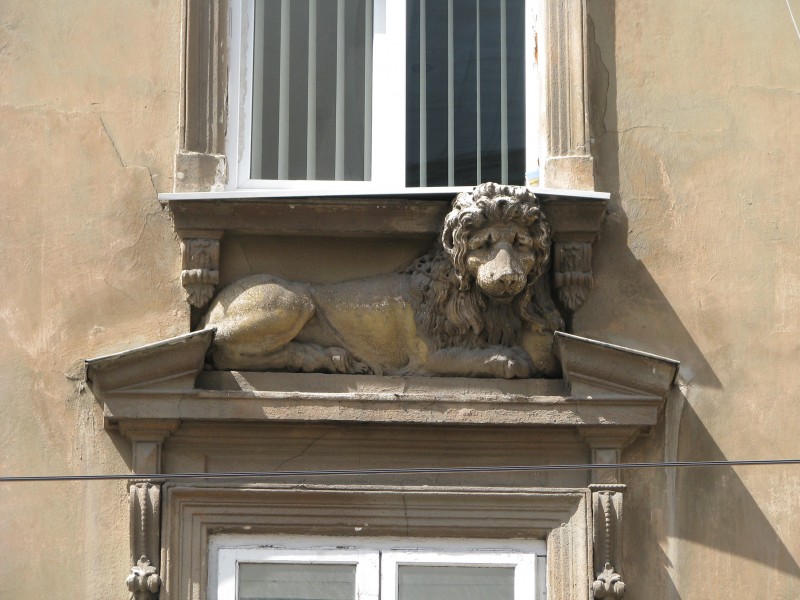
On the facade of the building at 2 Katedralna Square you can see the ‘Smiling Lion’ – it is the most popular lion among visitors. He raises his small eyebrows as if he was asking, ‘Well, what do you know about me?’ In fact, we know almost nothing, because the history of the house is not fully known, but we can guess that the owners of the house were truly positive personalities.
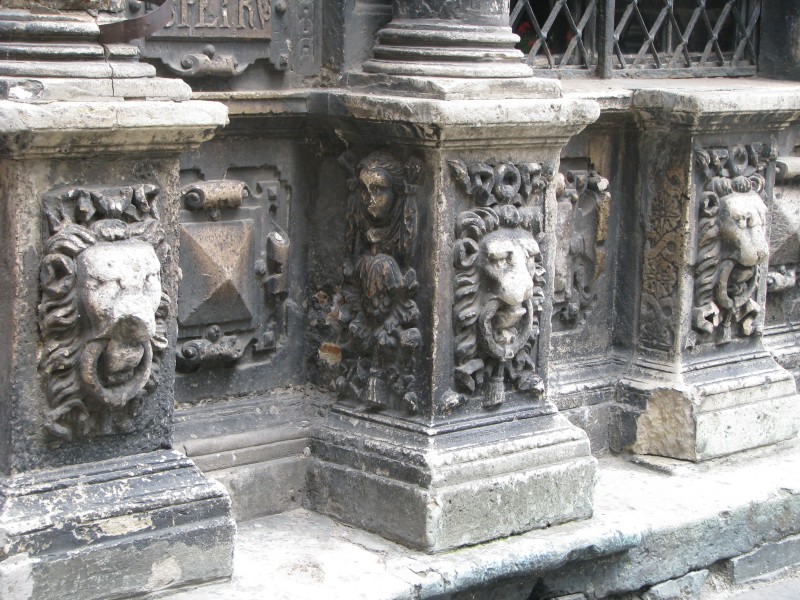
Some of the oldest lions adorn the Boim Family’s Chapel, the monument of sacral architecture in Lviv at 1 Katedralna Square. The chapel (1609-1615) was built over the family tomb of the Boims, Lviv patricians of Hungarian origin in what was the city cemetery at that time near the Latin Cathedral. A total of 14 members of the Boim dynasty were buried in the chapel. In the second half of the 18 th century, the burials were transferred from the Boims; Chapel to Lviv cemeteries, and the keys to the chapel were passed to the cathedral according to George Boim’s will. The outside of the chapel resembles Carpathian churches of the 17 th century with its archlike bulk structure.
Some of the oldest lions adorn the Boim Family’s Chapel, the monument of sacral architecture in Lviv at 1 Katedralna Square. The chapel (1609-1615) was built over the family tomb of the Boims, Lviv patricians of Hungarian origin in what was the city cemetery at that time near the Latin Cathedral. A total of 14 members of the Boim dynasty were buried in the chapel. In the second half of the 18 th century, the burials were transferred from the Boims; Chapel to Lviv cemeteries, and the keys to the chapel were passed to the cathedral according to George Boim’s will. The outside of the chapel resembles Carpathian churches of the 17 th century with its archlike bulk structure.
The famous ‘House under the Lions’ is located at 11 Halytska Street (the 17 th -19 th century). Of particular interest is the design of the corner house with the figures of two lions with one head at the intersection of Halytska and Staroyevreiska Streets that connected two religious quarters, Jewish and Catholic. Did it mean the unity of the two communities of different religions in one city or not? No one knows.
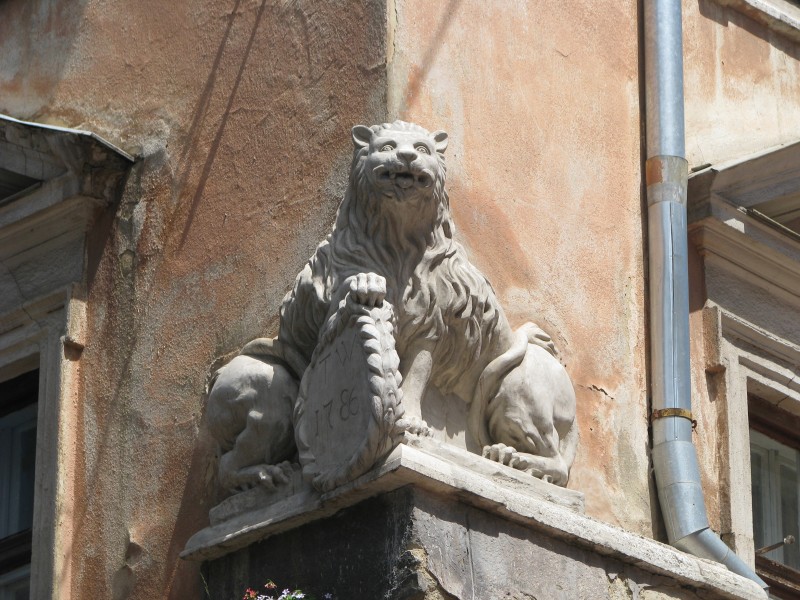
The famous ‘House under the Lions’ is located at 11 Halytska Street (the 17 th -19 th century). Of particular interest is the design of the corner house with the figures of two lions with one head at the intersection of Halytska and Staroyevreiska Streets that connected two religious quarters, Jewish and Catholic. Did it mean the unity of the two communities of different religions in one city or not? No one knows.

One of the darkest lions is located on the house at 6 Kniazia Romana Street (1912- 1914). In the 1920s the ‘Polish Land Bank’ was there and since 1929 a radio station has been there. The house combines the features of Jugendstil (the German version of Art Nouveau) and stylized Romanesque-Gothic elements. The sculptures of knights propping up the bay windows and a bas-relief decorated with lions over the triple portal were created in 1912-1913 by Stanisław Plichal.
One of the darkest lions is located on the house at 6 Kniazia Romana Street (1912- 1914). In the 1920s the ‘Polish Land Bank’ was there and since 1929 a radio station has been there. The house combines the features of Jugendstil (the German version of Art Nouveau) and stylized Romanesque-Gothic elements. The sculptures of knights propping up the bay windows and a bas-relief decorated with lions over the triple portal were created in 1912-1913 by Stanisław Plichal.
At 2 Sichovykh Striltsiv Street you can see a building in the Empire and Biedermeier styles (Biedermeier architecture is marked by simplicity and elegance of the 19 th century, representing German culture during urbanization and industrialization. In Ukraine this style spread over the Galicia and Bukovina regions that were part of the Austro-Hungarian Empire at that time). Above the corner of the house (1846-1847) you see two lions holding a sign with a St. Michael relief. Starting in 1869 the building was a main office for the Galician Savings Bank. In 1891 this financial institution was moved to the current building of the Ethnography Museum.

At 2 Sichovykh Striltsiv Street you can see a building in the Empire and Biedermeier styles (Biedermeier architecture is marked by simplicity and elegance of the 19 th century, representing German culture during urbanization and industrialization. In Ukraine this style spread over the Galicia and Bukovina regions that were part of the Austro-Hungarian Empire at that time). Above the corner of the house (1846-1847) you see two lions holding a sign with a St. Michael relief. Starting in 1869 the building was a main office for the Galician Savings Bank. In 1891 this financial institution was moved to the current building of the Ethnography Museum.
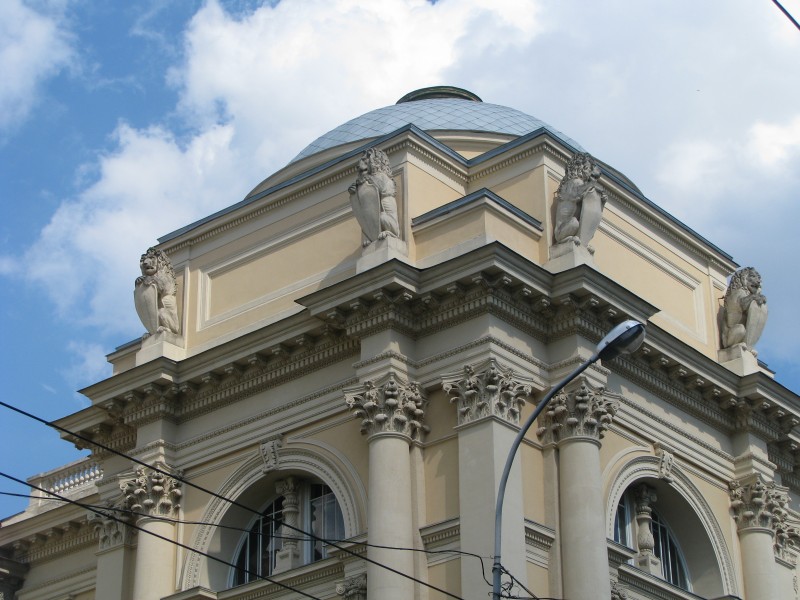
The sculptural decoration of the Galician Seim (present university) building, 1 Universytetska Street (1879-1881) is one of the richest architectural buildings of the city. The central sculpture group called ‘Galicia Patron Spirit’ was created in 1880-1881 in Italy. In the center you can see the allegorical female statue – Galicia stretching out her handsиto the personifications placed on both sides – Dnister and Vistula. There are other sculptures made by different sculptors: Faith and Justice, Education and Work. Nine lions surround the crown of the house, holding shields with coats of arms of cities in the province of the Galicia (most of them abolished in the post-war period). In 1923 the building was given to Lviv University, one of the oldest Ukrainian Universities (established on January 20, 1661). First, Latin was the language of instruction there and with the opening of the Ruthenian Department in the 19 th century the Ukrainian language was also used for the academic process.
The sculptural decoration of the Galician Seim (present university) building, 1 Universytetska Street (1879-1881) is one of the richest architectural buildings of the city. The central sculpture group called ‘Galicia Patron Spirit’ was created in 1880-1881 in Italy. In the center you can see the allegorical female statue – Galicia stretching out her handsиto the personifications placed on both sides – Dnister and Vistula. There are other sculptures made by different sculptors: Faith and Justice, Education and Work. Nine lions surround the crown of the house, holding shields with coats of arms of cities in the province of the Galicia (most of them abolished in the post-war period). In 1923 the building was given to Lviv University, one of the oldest Ukrainian Universities (established on January 20, 1661). First, Latin was the language of instruction there and with the opening of the Ruthenian Department in the 19 th century the Ukrainian language was also used for the academic process.
Do you still remember the story about the lion that has never seen daylight? So, if you walk to St. George Cathedral you will find it! It takes about 15 minutes to walk up the hill from the university. We decided to share a bit of the history of St. George Cathedral with you.
According to some legends, in the spring of 1280, following Prince Lev’s order, a wooden church and monastic cells were built here, devoted to St. George the Victorious. In this holy place, Lev’s uncle – Prince Vasylko – decided to spend his last years, taking monastic vows.
This wooden church along with the monastery stood here until 1340. It was burned by the Polish King Kazimierz III’ s troops during his first military campaign in Galicia, but the next year it was restored, as evidenced by the new church bell that was cast in 1341. It is the oldest working bell in Ukraine, and it is also serves as historical evidence of the existence of St. George’s monastery church. The new church was built on the site of the old wooden one in 1743. Its architect was Bernard Meretyn, who lived in Eastern Europe and worked in Lviv from 1738 to 1758. The new cathedral was built in the Baroque style. The architectural complex was created according to the rules of that style: the entrance from the square through the first gate decorated with the busts of saints leads us to a small yard where we see the next arch gate. You can see allegoric statues symbolizing Roman and Greek churches, sitting at the ragmented pediment of the gate. You can also see different sculptures, including St. Onuphrius and the Lion in the niche cave under the central stairs. The magnificent portal of the main facade is decorated with statues of St. Leo the Pope and St. Athanasius created by sculptor Johann George Pinsel. He also designed the equestrian statue of St. George the Dragon-Slayer (1759-1761) standing above the entrance. This dramatic statue is one of the best masterpieces of monumental Baroque sculpture in Ukraine. The interior of the cathedral was developed by sculptors Michal Filewicz and Sebastian Fesinger, and artists Franciszek Smuglewicz, Yuriy Radivilovsky, and Luka Dolinskyi. White and light-colored interior gives the feeling of unlimited space, especially when the sunrays shine through the windows illuminating the decorations. There is a crypt underneath the cathedral where Lviv bishops, priests, and monks were buried until 1783.
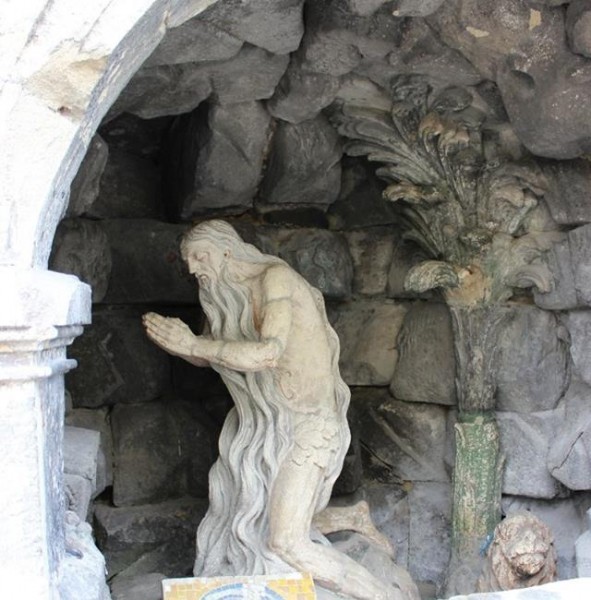
Do you still remember the story about the lion that has never seen daylight? So, if you walk to St. George Cathedral you will find it! It takes about 15 minutes to walk up the hill from the university. We decided to share a bit of the history of St. George Cathedral with you.
According to some legends, in the spring of 1280, following Prince Lev’s order, a wooden church and monastic cells were built here, devoted to St. George the Victorious. In this holy place, Lev’s uncle – Prince Vasylko – decided to spend his last years, taking monastic vows.
This wooden church along with the monastery stood here until 1340. It was burned by the Polish King Kazimierz III’ s troops during his first military campaign in Galicia, but the next year it was restored, as evidenced by the new church bell that was cast in 1341. It is the oldest working bell in Ukraine, and it is also serves as historical evidence of the existence of St. George’s monastery church. The new church was built on the site of the old wooden one in 1743. Its architect was Bernard Meretyn, who lived in Eastern Europe and worked in Lviv from 1738 to 1758. The new cathedral was built in the Baroque style. The architectural complex was created according to the rules of that style: the entrance from the square through the first gate decorated with the busts of saints leads us to a small yard where we see the next arch gate. You can see allegoric statues symbolizing Roman and Greek churches, sitting at the ragmented pediment of the gate. You can also see different sculptures, including St. Onuphrius and the Lion in the niche cave under the central stairs. The magnificent portal of the main facade is decorated with statues of St. Leo the Pope and St. Athanasius created by sculptor Johann George Pinsel. He also designed the equestrian statue of St. George the Dragon-Slayer (1759-1761) standing above the entrance. This dramatic statue is one of the best masterpieces of monumental Baroque sculpture in Ukraine. The interior of the cathedral was developed by sculptors Michal Filewicz and Sebastian Fesinger, and artists Franciszek Smuglewicz, Yuriy Radivilovsky, and Luka Dolinskyi. White and light-colored interior gives the feeling of unlimited space, especially when the sunrays shine through the windows illuminating the decorations. There is a crypt underneath the cathedral where Lviv bishops, priests, and monks were buried until 1783.
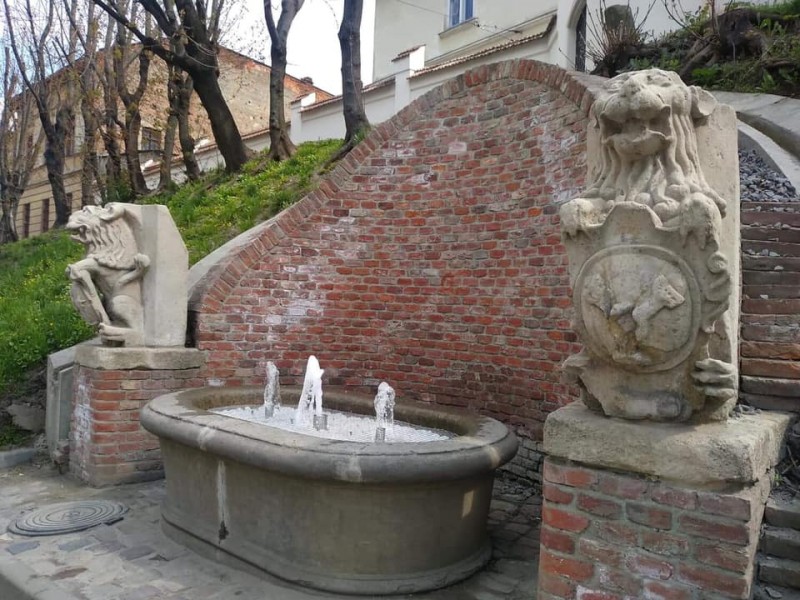
Now let’s go back to our hunt for the lions from the old City Hall! Where are they? Two of them are waiting for us near the well that no longer works at 27 Kopernyka Street. The lions are holding heraldic shields of Lviv patrician families. If you look behind the walls next to the lions, you will see the Church of St. Lazarus, built as a monastery and hospital in the first half of the 17 th century. It is a sacred building in the Baroque style but with Renaissance elements. For several centuries the hospital was a shelter for the poor and the crippled. Here the staff provided treatment for those wounded in battles against the Turkish and Tatar invaders. The house for the poor and the old existed here until the World War II. The old cathedral and hospital were reconstructed in 1989. Your attention might be drawn to the reliefs on the hospital wall that illustrate the Gospel parable of the rich man and Lazarus, as well as an extremely rare scene represented in plastic with God the Father holding SonиJesus on his lap.
Now let’s go back to our hunt for the lions from the old City Hall! Where are they? Two of them are waiting for us near the well that no longer works at 27 Kopernyka Street. The lions are holding heraldic shields of Lviv patrician families. If you look behind the walls next to the lions, you will see the Church of St. Lazarus, built as a monastery and hospital in the first half of the 17 th century. It is a sacred building in the Baroque style but with Renaissance elements. For several centuries the hospital was a shelter for the poor and the crippled. Here the staff provided treatment for those wounded in battles against the Turkish and Tatar invaders. The house for the poor and the old existed here until the World War II. The old cathedral and hospital were reconstructed in 1989. Your attention might be drawn to the reliefs on the hospital wall that illustrate the Gospel parable of the rich man and Lazarus, as well as an extremely rare scene represented in plastic with God the Father holding SonиJesus on his lap.
Let’s move to the next lion, who is one of the most impressive Lviv lions, guarding the ‘castle’ at 50-52 Henerala Chuprynky Street. The house was built in two phases by the architect Jozef Sosnowski for himself. His assistant was a famous Lviv architect and the representative of the so called ‘Hutsul secession’ – Ivan Levinskyi. The house № 50 was built first in 1900-1901 fully facing Henerala Chuprynky Street. The house№ 52 was built the second with its corner tower and side facade facing the modern I. Levynskoho Street in 1907. A night sky with the moon and stars painted on the vault over the entrance embellish the scene.
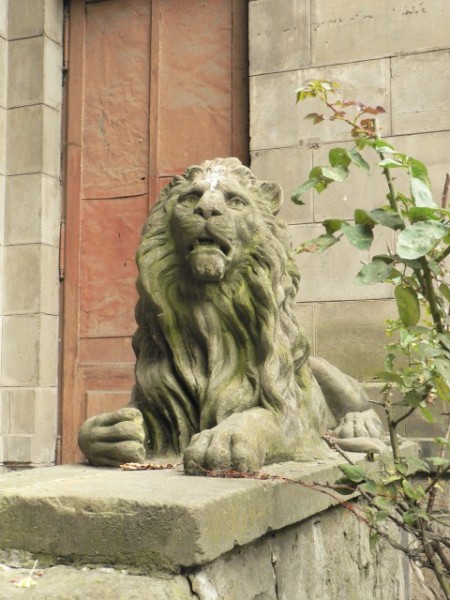
Let’s move to the next lion, who is one of the most impressive Lviv lions, guarding the ‘castle’ at 50-52 Henerala Chuprynky Street. The house was built in two phases by the architect Jozef Sosnowski for himself. His assistant was a famous Lviv architect and the representative of the so called ‘Hutsul secession’ – Ivan Levinskyi. The house № 50 was built first in 1900-1901 fully facing Henerala Chuprynky Street. The house№ 52 was built the second with its corner tower and side facade facing the modern I. Levynskoho Street in 1907. A night sky with the moon and stars painted on the vault over the entrance embellish the scene.
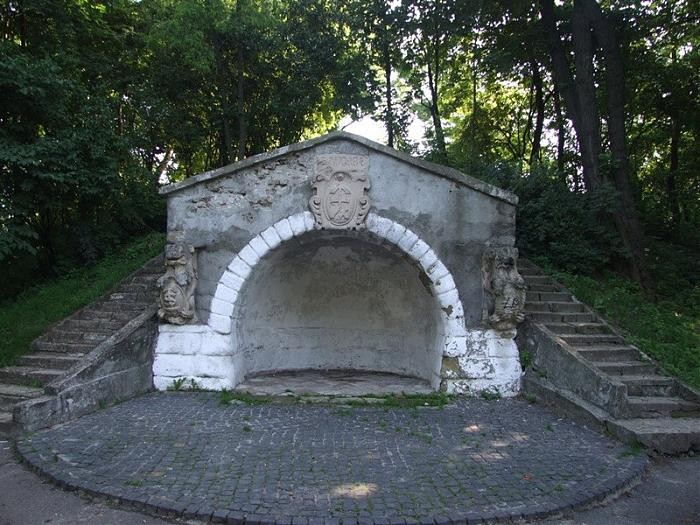
If you still have enough energy to keep walking, we suggest you to go up the High Castle Hill where there is a great view on the city. You can find two more lions that moved from the old City Hall there. Who knows, maybe it is the secret place where the lions meet at night? It must be a special place since it inspired King Danylo to build a castle there and to found Lviv…
Reading Ruthenian chronicles and later the chronicles of the 14th-17th centuries, historians found out that in the middle of the 13 th century Prince Lev had wooden-ground fortifications built here. The wooden castle was burned after the attacks of Kazimierz s troops in the 14 th century. A new stone castle was built at the end of 14 th century by the Poles who started ruling these territories in 1387. It was used as a residence and partially as a prison (in particular, for German knights captured at the Grunwald Battle in 1410). The High Castle has seen a lot in its days, starting with B. Khmelnytsky and M. Кryvonis’s military campaigns (1648), later Swedes (1704), then Austrian rule (1772), and in 1777 the Austrian government initiated the fortifications demolition. In th e beginning of the 19th century the biggest part of the castle was destroyed. The remains of the walls were completely destroyed in 1868-1869 during the Lublin Union Mound construction. At present you can see only one wall piece on the southern side of the mound.
In 1841 an artificial cave (grotto) decorated with two lions from the old City Hall was built here. At the end of the 19 th century, the grotto had the reputation of being a suicide spot although there are no documents providing evidence of any unfortunate event here…
If you still have enough energy to keep walking, we suggest you to go up the High Castle Hill where there is a great view on the city. You can find two more lions that moved from the old City Hall there. Who knows, maybe it is the secret place where the lions meet at night? It must be a special place since it inspired King Danylo to build a castle there and to found Lviv…
Reading Ruthenian chronicles and later the chronicles of the 14th-17th centuries, historians found out that in the middle of the 13 th century Prince Lev had wooden-ground fortifications built here. The wooden castle was burned after the attacks of Kazimierz s troops in the 14 th century. A new stone castle was built at the end of 14 th century by the Poles who started ruling these territories in 1387. It was used as a residence and partially as a prison (in particular, for German knights captured at the Grunwald Battle in 1410). The High Castle has seen a lot in its days, starting with B. Khmelnytsky and M. Кryvonis’s military campaigns (1648), later Swedes (1704), then Austrian rule (1772), and in 1777 the Austrian government initiated the fortifications demolition. In th e beginning of the 19th century the biggest part of the castle was destroyed. The remains of the walls were completely destroyed in 1868-1869 during the Lublin Union Mound construction. At present you can see only one wall piece on the southern side of the mound.
In 1841 an artificial cave (grotto) decorated with two lions from the old City Hall was built here. At the end of the 19 th century, the grotto had the reputation of being a suicide spot although there are no documents providing evidence of any unfortunate event here…